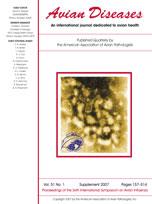An avian influenza (AI) isolate can be classified as a high pathogenicity avian influenza (HPAI) virus based upon the results of the standard intravenous pathogenicity index test; molecular classification, which is derived by sequencing the hemagglutinin gene across the site coding for the cleavage site; or a combination. However, discordant results between the molecular classification and virulence for experimentally infected chickens have been observed with several H5 and H7 subtype AI viruses. Because the declaration of HPAI virus results in severe effects on trade for the entire country, the gap between the genetic and phenotypic markers is an important issue, and it requires us to reexamine what should be considered an HPAI virus by the Office International des Épizooties standards. To better understand and assess the true virulence of the virus, potential pathogenicity of H5 and H7 subtype AI virus isolates has been assessed by examining the plaquing efficiency of the virus in chicken embryo fibroblast cells, conducting 14-day-old embryo passage and selection system, and applying in vitro mutagenesis coupled with reverse genetics. The potential value of these complimentary methods in assessing potential pathogenicity of the AI virus is discussed.
How to translate text using browser tools
1 March 2007
Assessing Potential Pathogenicity of Avian Influenza Virus: Current and Experimental System
C-W. Lee,
Y. J. Lee,
D. Swayne,
D. Senne,
J. Linares,
D. Suarez
ACCESS THE FULL ARTICLE

Avian Diseases
Vol. 51 • No. s1
March 2007
Vol. 51 • No. s1
March 2007
avian influenza
pathogenicity
reverse genetics




